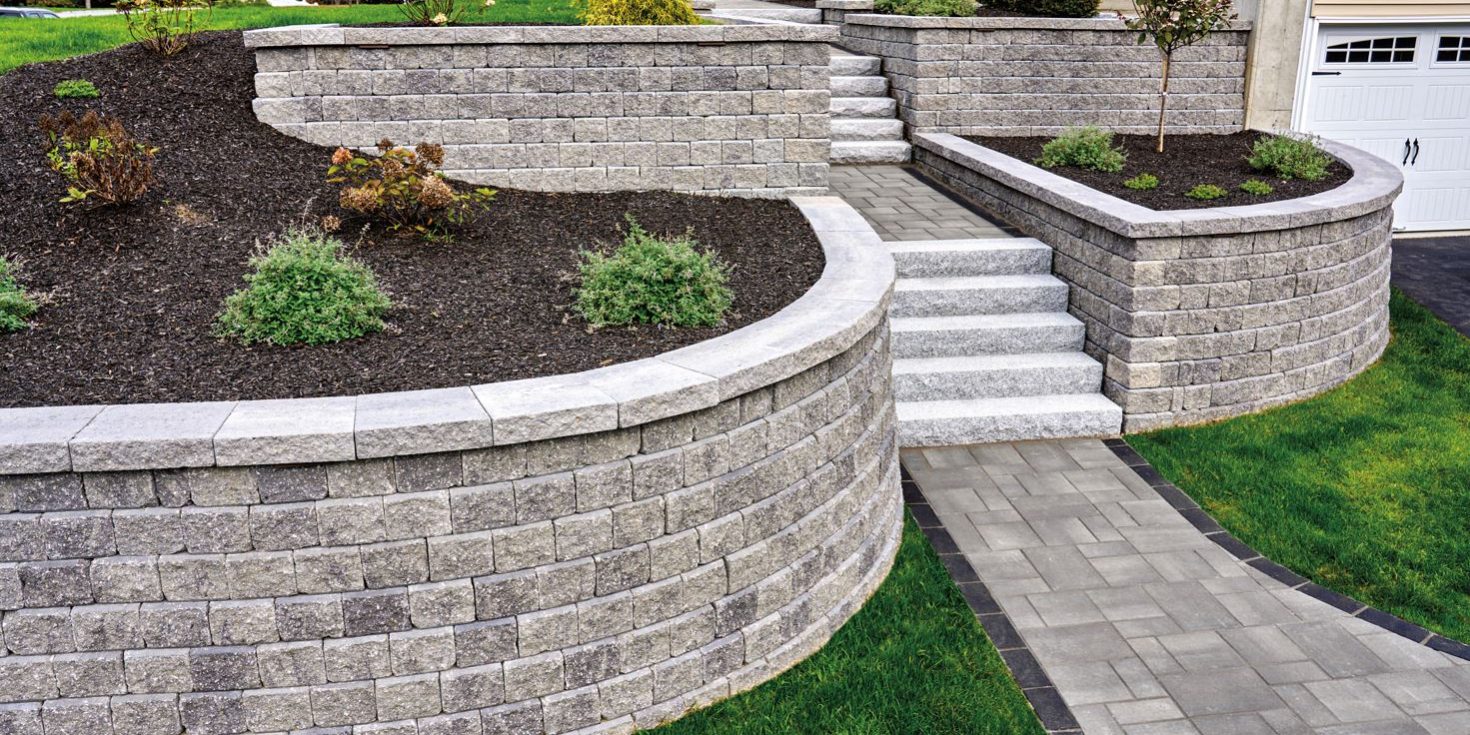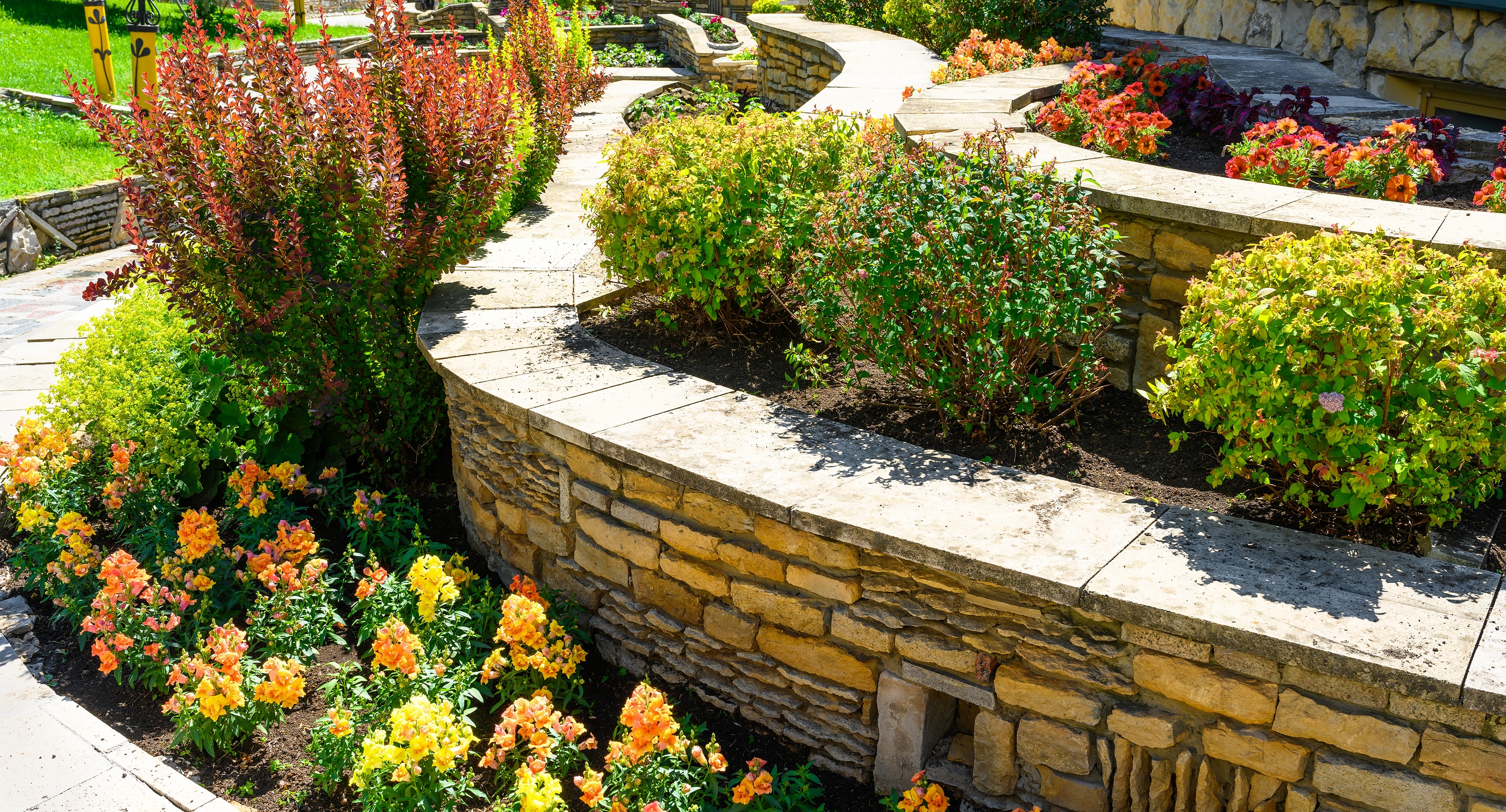Trick Factors To Consider for Structure Efficient Retaining Walls in Your Lawn
When you're thinking about building a maintaining wall in your backyard, it's essential to think concerning several vital elements. The wall surface's purpose, the materials you'll use, and the certain dirt conditions can all influence its effectiveness and long life.
Recognizing the Purpose of Your Retaining Wall
When you think of developing a preserving wall, consider its primary objective: stabilizing dirt and avoiding disintegration. Retaining walls offer necessary assistance for sloped landscapes, helping to maintain soil integrity. You'll discover they're vital in areas where water overflow may otherwise wash away dirt, leading to pricey repair work and landscape damages.
By keeping back planet, these walls produce level surfaces for gardens, patios, or pathways. This not just boosts your backyard's looks yet also promotes much better water drainage, decreasing water pooling in unwanted areas. If you're taking care of high inclines, a well-constructed retaining wall can stop landslides, making sure safety and security for you and your home.
Eventually, comprehending the function of your retaining wall surface will certainly lead your layout choices and assist you produce a practical, sturdy framework that fulfills your demands. So, take a minute to review your landscape; it'll settle in the future.
Choosing the Right Materials
When picking products for your retaining wall surface, you'll wish to take into consideration durability, aesthetics, and cost. Each variable plays an essential duty in guaranteeing your wall stands the test of time while looking fantastic and fitting your spending plan. Allow's check out how to make the very best options for your job.
Material Longevity Variables
Selecting the right products is vital for the longevity and performance of your retaining wall, considering that their longevity straight affects the wall surface's ability to stand up to environmental stress and anxieties. Beginning by considering your local climate; materials like concrete and rock resist dampness and temperature variations well. If you reside in a location susceptible to hefty rainfalls, choose products with great water drainage properties, like crushed rock or porous blocks, to avoid water build-up.
Some materials do much better in specific dirt types, so it's essential to match them accordingly. Choosing durable products assurances your retaining wall stands strong, protecting your lawn for years to come.
Aesthetic Layout Selections
Long lasting materials not just ensure your retaining wall's structural stability yet likewise play an essential duty in its aesthetic charm. When selecting the ideal products, assume regarding exactly how they enhance your landscape. All-natural stone provides an ageless, rustic look, while cinder block can offer a streamlined, contemporary finish. You may also think about using lumber for a cozy, organic feeling. Color and structure matter, too; choose tones that balance with your home and yard. Don't ignore the wall's form-- rounded walls can create a softer look, while straight lines can really feel a lot more structured. By thoroughly selecting products that line up with your aesthetic vision, you'll improve your outside area while ensuring your wall surface stands strong versus the elements.
Cost-Effectiveness Evaluation
Choosing the appropriate products for your retaining wall isn't simply concerning appearances; it's also crucial for your budget. When picking materials, consider both ahead of time expenses and lasting toughness.
Don't neglect to consider upkeep prices too (OKC Precision Retaining Walls). Some materials, like all-natural stone, can add elegance and call for less upkeep, while others may require normal treatments
Eventually, consider the pros and cons of each alternative versus your budget and the wall's designated objective. Spending sensibly in materials now can avoid pricey issues later on. Select products that balance price and efficiency successfully.
Examining Dirt Problems and Drain
As you start your job, examining soil problems and drain is necessary for the success of your retaining wall. Sandy soil drains pipes well yet lacks stability, while clay dirt can keep moisture, leading to push on your wall.
Next, assess the incline of your lawn. If water normally streams toward your wall surface, you'll need to implement a drainage remedy to avoid erosion and stress buildup. Take into consideration setting up perforated pipes or gravel backfill behind the wall surface to help with water drainage.
Finally, observe any kind of close-by trees or plant life; their origins can influence dirt security. By comprehending your dirt conditions and applying proper water drainage, you'll produce a strong foundation for your retaining wall surface that stands the test of time.
Abiding By Local Building Ordinance
Before you begin building your retaining wall surface, you need to research local policies to ensure conformity. It's important to understand what permits you should acquire, as this can conserve you from costly fines or having to renovate your work. Taking these actions seriously will aid you build a risk-free and effective structure.
Research Study Local Rules
Understanding neighborhood guidelines is vital when planning your retaining wall surface task, particularly since constructing codes can vary greatly by place. Look for guidelines on wall surface height, materials, drain systems, and structural stability. By doing your research upfront, you can ensure your retaining wall surface satisfies all required codes and blends seamlessly into your backyard.
Acquire Essential Licenses
As soon as you've looked into regional regulations, the next action is to obtain the needed permits for your retaining wall task. This process guarantees your wall follows building ordinance and safety and security criteria. Connect to your neighborhood building authority to discover what permits you need. They may call for specific plans or engineering evaluations, especially for bigger walls. Be prepared to submit comprehensive illustrations, including dimensions and products. Don't fail to remember to check if your task influences water drainage or surrounding residential or commercial properties, as these variables may call for extra permits. Safeguarding the ideal authorizations can save you from expensive penalties or needing to dismantle your wall later. Bear in mind, adhering to the guidelines now will cause a smoother building and construction experience.

Planning the Style and Looks
As you start intending the layout and appearances of your retaining wall surface, think about how it will certainly balance with the surrounding landscape. Think of the materials you'll make use of-- rock, brick, or concrete-- and just how they'll match your home's architecture and the natural environments in your yard. Select colors and appearances that mix perfectly with click for more existing features like patio areas, pathways, or yards.
Next, see page picture the wall's shape and elevation. Curved walls can soften an inflexible landscape, while straight lines may convey a more contemporary look. Do not forget to include plants and greenery around the wall surface for a natural touch; this can boost its allure and incorporate it into the atmosphere.
Finally, keep in mind performance. Your design must not only be visually pleasing yet also offer its objective effectively. By thoughtfully preparing these components, you'll create a preserving wall that enhances your yard's appeal while fulfilling its architectural role.
Determining Elevation and Thickness Needs
To build a strong retaining wall surface, you need to precisely compute its height and thickness demands based on the soil problems and the elevation of the slope it will certainly support. Beginning by examining the incline's angle and the kind of dirt, as different dirts apply varying amounts of stress.
For walls over four feet high, take into consideration a thickness of at the very least 12 inches. If the wall surface is taller, enhance the density proportionally to maintain stability.
Next, compute the height of the wall surface by measuring the upright range it requires to keep. For every single foot of height, you must commonly intend for a density of one-third of the wall surface's height.
Always keep in mind to account for extra elements like water drainage and backfill, which can influence your wall's design. Proper calculations now ensure your retaining wall stands strong and lasts for years to find.
Maintenance and Long Life Factors To Consider
While preserving your retaining wall surface might appear like a reduced top priority, disregarding it can result in substantial problems gradually. Regular evaluations are important; look for cracks, bulges, or any type of indicators of water damages. Resolving these troubles early can conserve you from costly fixings down the roadway.
Maintain an eye on drainage systems, as well. Clogged drains can trigger water to accumulate, exerting stress on your wall surface and compromising its stability. Clear debris and warranty correct circulation to keep long our website life.
You might additionally want to assess sealing your wall surface to shield it from dampness and weathering. Relying on the product, this could need reapplication every few years.
Finally, landscape design around your wall can sustain its integrity. Prevent planting big trees nearby, as their roots can threaten the structure. With positive upkeep, your retaining wall surface can offer you well for many years to find.

Regularly Asked Questions
Can I Build a Retaining Wall by Myself, or Should I Hire a Professional?
You can most definitely construct a keeping wall on your own if you have the right tools and knowledge. Nonetheless, working with a specialist assurances it's done appropriately, particularly for larger or even more complex structures. Consider your ability level before making a decision.
What Are the Most Usual Errors Made When Building Retaining Walls?
When developing retaining walls, you could overlook appropriate drainage, skip using the right products, or neglect reinforcement. These typical errors can lead to structural failure, so take your time and strategy very carefully to stay clear of problems.
Exactly how Do I Know if My Retaining Wall Needs Support?
You'll recognize your retaining wall surface requires reinforcement if you notice fractures, leaning, or protruding. Look for water pooling behind it or dirt erosion near the base. Address these signs without delay to stop more damage.
What Plants Are Ideal for Landscaping Around a Retaining Wall?
When landscaping around a keeping wall, think about utilizing low-maintenance plants like succulents, ornamental yards, or slipping ground covers - OKC Precision Retaining Walls. They'll prosper in those conditions and add appeal while stopping dirt disintegration around your wall
Just How Can I Protect Against Erosion Around My Retaining Wall?
To stop erosion around your retaining wall surface, you can grow ground cover, usage mulch, and mount water drainage systems. Frequently look for water buildup and readjust landscaping to reroute runoff far from the wall.